Forging vs Casting, Billet, and Extrusion
In this artice, Cerro Fabrication Products (CFP) discusses the processes of forging vs casting, billet, and extrusion. All are different methods of manufacturing parts, and each method has its own benefits. Here, we take a look at what those benefits are and make a comparison.
Closed Die Forging
A closed die forging (also referred to as impression die forging) is defined as two die halves (top and bottom) that are brought together vertically to compress a malleable billet of material. The material flows through the die cavities that shape the part.
Excess material is required to fill out the die cavities. This extra material flows out of the cavity, creating flash. The flash is then trimmed off in a later operation.
The grain structure in the billet material in the pre-forge condition is straight. When the malleable billet is compressed between the dies, the grain structure is altered, and instead of being straight, the grain flows along the contour of the part, enhancing its strength by up to 25% when compared to that material in billet form.
In industries such as Aircraft, Powersports, and Automotive, forgings are necessary to create strong and reliable parts that are used in applications under higher stress.
Castings
A casting is the process of producing a part with the use of molds. Hot liquid metal is poured into a mold, then the metal solidifies. After the material solidifies, the part is removed from the mold.
Casting is much different than other forms of manufacturing metal parts because the process starts with molten metal. Depending on the type of casting, this method of manufacturing can produce near net parts because the molds are designed to produce tight tolerances. When considering casting vs. forging, cast parts will not be as strong as forged parts. Castings are best used in applications where pressure and strength are not critical. Castings do not have the grain structure like a forging, and issues of porosity in the casting process can cause scrap.
Billet
A billet made part is produced from a solid piece of material with square or circular cross sections. A billet part starts from a 10’ or longer piece of rod that is cut to size, just like an extrusion.
The benefits of a billet-made part are that it’s cost effective when producing parts in lower volumes, it can achieve a high degree of precision, and parts can be made with a shorter lead time.
Disadvantages of billet parts are that the cost increases as the production volumes increase, certain designs are not cost effective to machine from billet, there is high chip scrap if parts need to be extensively machined, and the billet part will not be as strong because grain flow in a forging is superior.
The benefits of using a forging instead of billet is that a forging will provide a closer net shape, minimizing machining because less material is being used. Forging is more cost effective when parts are produced in higher production volumes.
Extrusions
An extrusion is the manufacturing process of choice when producing parts in high volumes where the part design has a constant cross section. Using high pressure, hot or cold material is forced through the shaped opening of a die. As the metal passes through the die, its shape changes to reflect the die’s shape. Extrusions are generally produced in lengths of 10’ or more, then cut to the desired billet size off that length.
If your part has continuous cross sections in a high volume application, then an extrusion is the best manufacturing process at a much lower cost. The cons of extrusions are variations in the size of the part, product limitations (only one type of cross section can be obtained at a time), and a high initial set up cost.
Also, while forgings offer a 3-dimensional process, extrusions are limited to 2-dimensional only.
At Cerro Fabricated Products, we serve many industries with our brass, aluminum, and copper forging capabilities. Contact us and we’ll be happy to answer all of your questions and help you determine which form of manufacturing is best for your particular needs.

